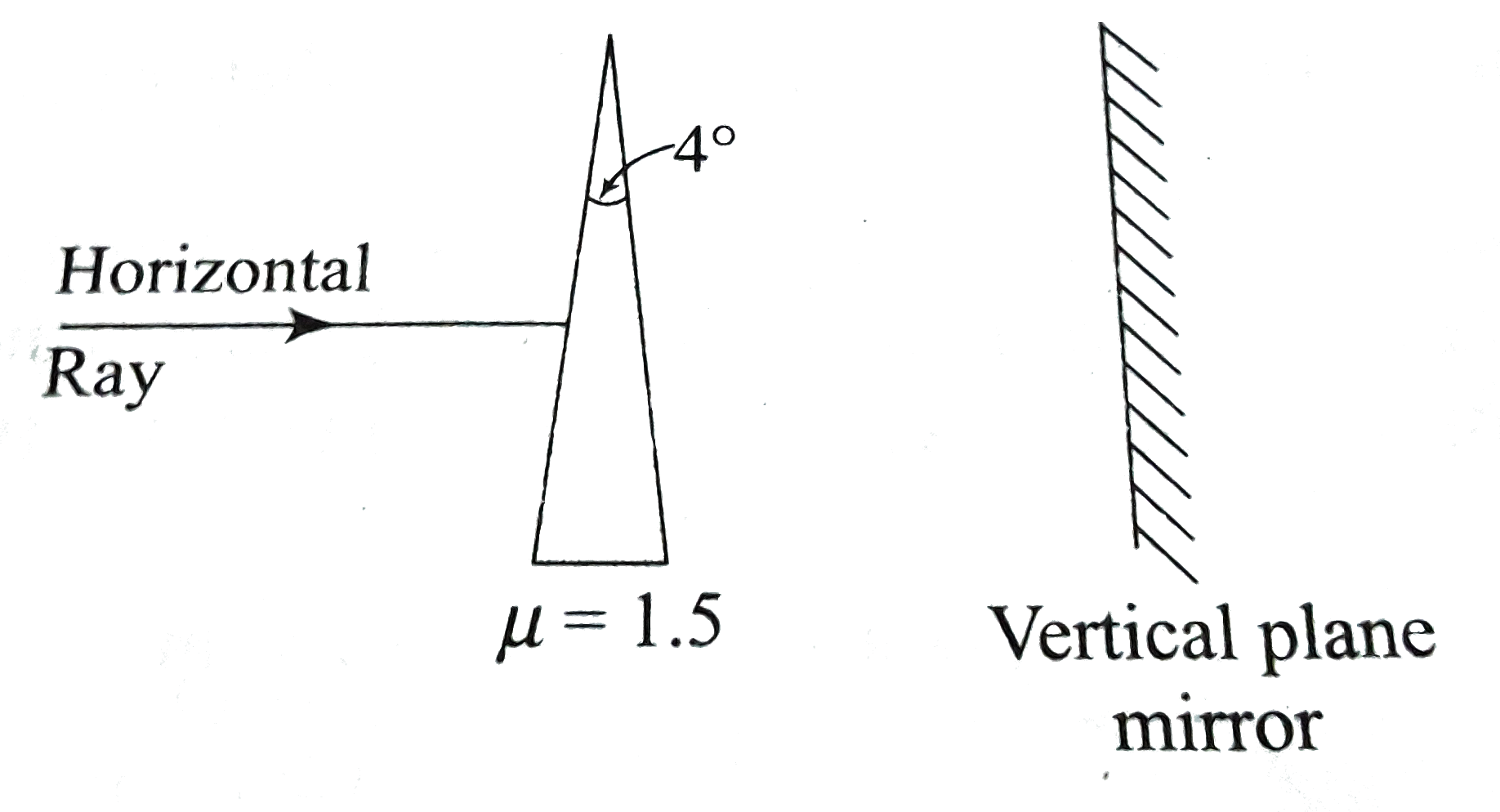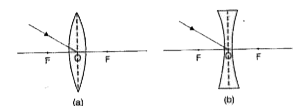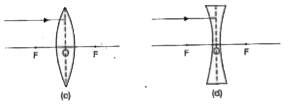To construct a ray diagram, you need at least ______ whose path(s) after refraction through the lens are known.
one ray
two rays
three rays
none of these
The correct Answer is:B
To construct a ray diagram, you need at least two rays whose paths after refraction through the lens are known.
1. Understanding Ray Diagrams:
- A ray diagram is a graphical representation used to show the path of light rays as they pass through optical devices like lenses and mirrors.
2. Identifying the Minimum Requirement:
- To accurately determine the position of the image formed by a lens, we need to know the paths of light rays after they refract through the lens.
3. Determining the Number of Rays Needed:
- At least two rays are required to find the point where they converge or diverge to form an image. If we only have one ray, we cannot determine the exact location of the image.
4. Example of Ray Paths:
- One common approach is to use:
- A ray that travels parallel to the principal axis, which, after refraction, will pass through the focus of the lens.
- A second ray that travels through the optical center of the lens, which will continue in a straight line without deviation.
5. Conclusion:
- The intersection of these two rays will give us the position of the image. Therefore, the minimum number of rays needed to construct a ray diagram is two.
- A ray diagram is a graphical representation used to show the path of light rays as they pass through optical devices like lenses and mirrors.
- To accurately determine the position of the image formed by a lens, we need to know the paths of light rays after they refract through the lens.
- At least two rays are required to find the point where they converge or diverge to form an image. If we only have one ray, we cannot determine the exact location of the image.
- One common approach is to use:
- A ray that travels parallel to the principal axis, which, after refraction, will pass through the focus of the lens.
- A second ray that travels through the optical center of the lens, which will continue in a straight line without deviation.
- The intersection of these two rays will give us the position of the image. Therefore, the minimum number of rays needed to construct a ray diagram is two.
Topper's Solved these Questions
- REFRACTION OF LIGHTBOOK - MCGROW HILL PUBLICATIONCHAPTER - REFRACTION OF LIGHTEXERCISE - HIGHER ORDER THINKING QUESTIONS
37 Videos
- REFLECTION OF LIGHT BOOK - MCGROW HILL PUBLICATIONCHAPTER - REFLECTION OF LIGHT EXERCISE - HIGHER ORDER THINKING QUESTIONS
10 Videos
- SOURCES OF ENERGY BOOK - MCGROW HILL PUBLICATIONCHAPTER - SOURCES OF ENERGY EXERCISE - ELEMENTARY QUESTIONS
82 Videos
Similar Questions
A ray of light is going towards the focus of a convex lens. Draw a ray digram to show the path of this ray of light after refraction through the lens.
View Solution(a) To construct a ray diagram, we use two rays which are so chosen that it is easy to know their directions after reflection from the mirror. List two such rays and state the path of these rays after reflection in case of concave mirrors. Use these two rays and draw ray diagram to locate the image of an object placed between pole and focus of a concave mirror.
(b) A concave mirror produces three times magnified image on a screen. If the object is placed 20 cm in front of the mirror, how far is the screen from the object?
View Solution
Knowledge Check
For the situations shown in figure, determine the angle by which the mirror should be rotated, so that the light ray will retrace its path after refraction through the prism and reflection from the mirror?
 A1∘ACWB1∘CWC2∘ACWD2∘CW
A1∘ACWB1∘CWC2∘ACWD2∘CWIf the object is placed at A and the image is formed at B when the rays are refracted through a convex lens. The position. Of A and B are changeable. Such pair of is called.
Apair of focal points.Bpair of object and focal points.Cconjugate foci.Dpair of foci.
A ray of light strikes a glass slab 5 cm thick, making an angle of incidence equal to 30∘. Construct the ray diagram showing the emergent ray and the refracted ray through the glass block. The refractive index of glass is 1.5. also, measure the lateral displacement of the ray. take. sin19.5∘=1/3.
View Solution(i) State laws of refraction and explain Snell's law.
(ii) To construct a ray diagram we use two light rays which are so chosen that it is easy to know their directions after reflection from the mirror. List these two rays and state the path of these rays after reflection. Use these two rays to locate the image of an object placed between infinity and the pole of a convex mirror.
View SolutionA ray of light after refraction through a concave lens becomes parallel to the principal axis after refraction through the concave lens. Explain with a ray diagram when this can happen.
View SolutionA ray of light after reflection through a concave lens becomes parallel to the principal axis after refraction through the concave lens. Wxplain with a ray diagram when this can happen.
View SolutionTo construct a ray diagram we use two rays of light which are so chosen that it is easy to determine their directions after reflection from the mirror. Choose these two rays and state the path of these rays after reflection from a concave mirror. Use these two rays to find the nature and position of the image of an object placed at a distance of 15 cm from a concave mirror of focal length 10 cm.
View SolutionIn each case, given below re-draw the diagram and show the direction of the light ray after refraction from the lens:


View Solution
